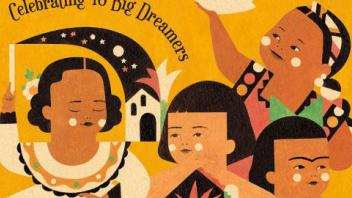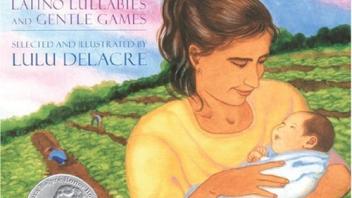I think ultimately Milo Imagines the World is a journey of a boy learning how to understand how others see him, and also how he sees himself. And so there are two things going on there.
He’s speculating about the people around him on very little information. So he imagines this scraggly-faced guy who’s doing a crossword looks a little disheveled. He imagines him going off to an apartment that maybe has a lot of cats and trash and maybe he’s a lonely man. So he makes that leap from this visual information, he’s slightly disheveled and he has a little bit of a scraggly beard, to a lonely existence.
Well, I think part of the journey on the subway to visit his mother, part of that journey in terms of his interior journey, is that he’s also beginning to connect the way he’s making these judgments based on very little information, and the way people might be judging him similarly with very little information.
And there’s a young boy who he thinks dressed really nice, and he’s got a perfect part and shoes with no scuffs. And he thinks, “Well, this kid, this light-skinned boy, is probably living in a castle. He’s got a great life.” And there’s one moment I think that’s to me the most important moment in the book where they look at each other and in that strange moment of connecting visually, I think Milo’s heart sinks.
Because when he looks at this boy he sees all the possibilities that this boy has that he doesn’t have. And in that way he’s actually stereotyping himself, which we don’t often talk about with this book. And I think he’s building walls around himself in that moment, that he’s not fully aware of.
And I’ll tell you, this comes from my own childhood. I remember we never went to restaurants. And one time a friend’s family took me to a restaurant and I was so nervous because it had cloth napkins and the waitress was actually asking me what I wanted to order. And I had never experienced this, like, “What salad dressing do you want?” And I was so confused, and like, literally sweating.
And then I saw this other boy who was the same age as me at a couple tables away. And I remember he just seemed so confident. And two things ran through my mind at that moment. First I thought, “This kid, he just has different access to the world than I do and I’m never going to have the opportunities he has,” and it made me feel like my life was more limited. And then I also thought, “If I ever have any money, I’m going to go to restaurants every day so I know how to do this,” and I also thought it was fun.
But I think, in that moment, Milo’s feeling something similar. He’s actually building walls around his own possibilities by judging himself against somebody else. Now, when he sees that this same boy is going to the same destination that he is, that he also has an incarcerated mother, it pops something. And now he has to confront that, “Maybe these judgments that I have, that are based on stereotypes, lazy stereotypes, maybe they’re in need of revision, or maybe I need to be less confident about them.”
And so I think what I was really trying to challenge young people to do is, is understand that when you see somebody on the street and you sort of do lean on these lazy stereotypes that we all lean on, try to be more generous with people around you, because behind every face we see on the street there’s an entire story that we don’t have access to. And I think if we understand that, we will be more generous with people around us.






